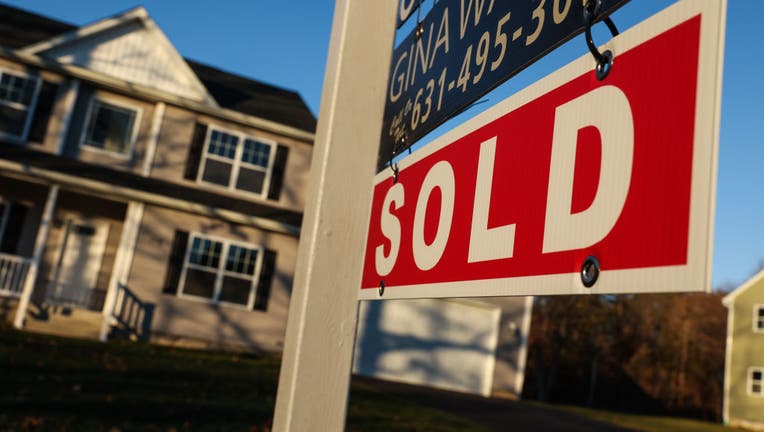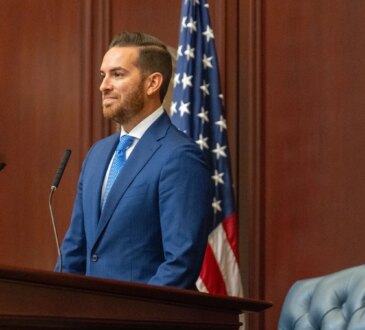
A “Sold” sign sits in front of a newly purchased home as property taxes continue to climb across major US metros. (Photo by Steve Pfost/Newsday RM via Getty Images)
LOS ANGELES – Property taxes are going up—and not just a little. A new LendingTree study shows that median property taxes rose in every major US metro between 2021 and 2023, with the national average increase hitting 10.4%.
Homeowners in some cities saw far steeper spikes. In Tampa, Florida, for example, property taxes jumped by a whopping 23.3%, the most of any metro. Indianapolis and Dallas weren’t far behind. The study, based on Census Bureau data, shows the rising burden for homeowners during a time when inflation and cost-of-living pressures have already strained many budgets.
Where did property taxes rise the most?
By the numbers:
The top 10 metros with the steepest increases in median property taxes between 2021 and 2023 include:
- Tampa, FL: +23.3%
- Indianapolis, IN: +19.8%
- Dallas, TX: +19.0%
- Jacksonville, FL: +18.7%
- Atlanta, GA and Miami, FL: +18.6%
- Seattle, WA: +18.4%
- San Antonio, TX: +18.2%
- San Diego, CA: +18.0%
- Charlotte, NC: +17.6%
At the other end of the spectrum, Pittsburgh, Philadelphia, and Milwaukee saw smaller increases—each under 8.5%.
How much are people actually paying?
Big picture view:
Nationally, the median property tax bill in 2023 was $2,969, or about $247 per month. However, there’s a sharp divide between homeowners with and without mortgages:
- With mortgage: $3,343 median
- Without mortgage: $2,474 median
That $869 difference isn’t just a number—it’s money that could be going toward bills or savings. Matt Schulz, chief consumer finance analyst at LendingTree, said it adds up: “It may not seem like an earth-shattering amount of money, but that equates to about $70 to $75 a month that can’t go toward paying bills or reaching other financial goals… It’s an even bigger deal when you also have a mortgage.”
Where do people pay the most—and the least?
Local perspective
The highest median property taxes were found in:
- New York, NY: $9,937
- San Jose, CA: $9,554
- San Francisco, CA: $8,156
Meanwhile, the lowest were in:
- Birmingham, AL: $1,091
- Memphis, TN: $1,856
- Louisville, KY: $1,912
Homeowners in Birmingham pay 41.2% less than those in Memphis—even though both are among the least expensive.
Which cities have the lowest tax rates?
By the numbers:
LendingTree also looked at effective property tax rates, which measure taxes as a percentage of home value. The metros with the lowest rates:
- Birmingham, AL: 0.48%
- Phoenix, AZ: 0.48%
- Las Vegas, NV and Denver, CO: 0.50%
In contrast, the highest effective tax rates were:
- Buffalo, NY: 2.11%
- Chicago, IL: 2.08%
- Cleveland, OH: 1.74%
What they’re saying:
Schulz noted that property taxes are especially hard to budget around because they’re non-negotiable: “Most people’s financial margin for error is so small right now… that any increase may become even more difficult to manage,” he told LendingTree. “These types of increases aren’t things you can cancel like a Netflix subscription.”
He also pointed out that some homeowners may be caught off guard. “As Austin has boomed in recent years, many people have moved here from California… only to be unpleasantly surprised by the size of their yearly property tax bill. It’s a big deal.”
What can homeowners do about rising property taxes?
What you can do:
LendingTree’s experts offered several tips:
- Use a high-yield savings account to set aside funds for your property tax bill and earn interest in the meantime.
- Check for local exemptions, such as age-based or homestead deductions.
- Appeal your property tax assessment if you believe your home is overvalued.
The Source: This article is based on a LendingTree analysis of the U.S. Census Bureau’s 2023, 2022, and 2021 American Community Surveys, using five-year estimates of median property taxes and home values. All quotes from Matt Schulz were taken directly from LendingTree’s published report. Data includes comparisons across the 50 largest US metropolitan areas.




